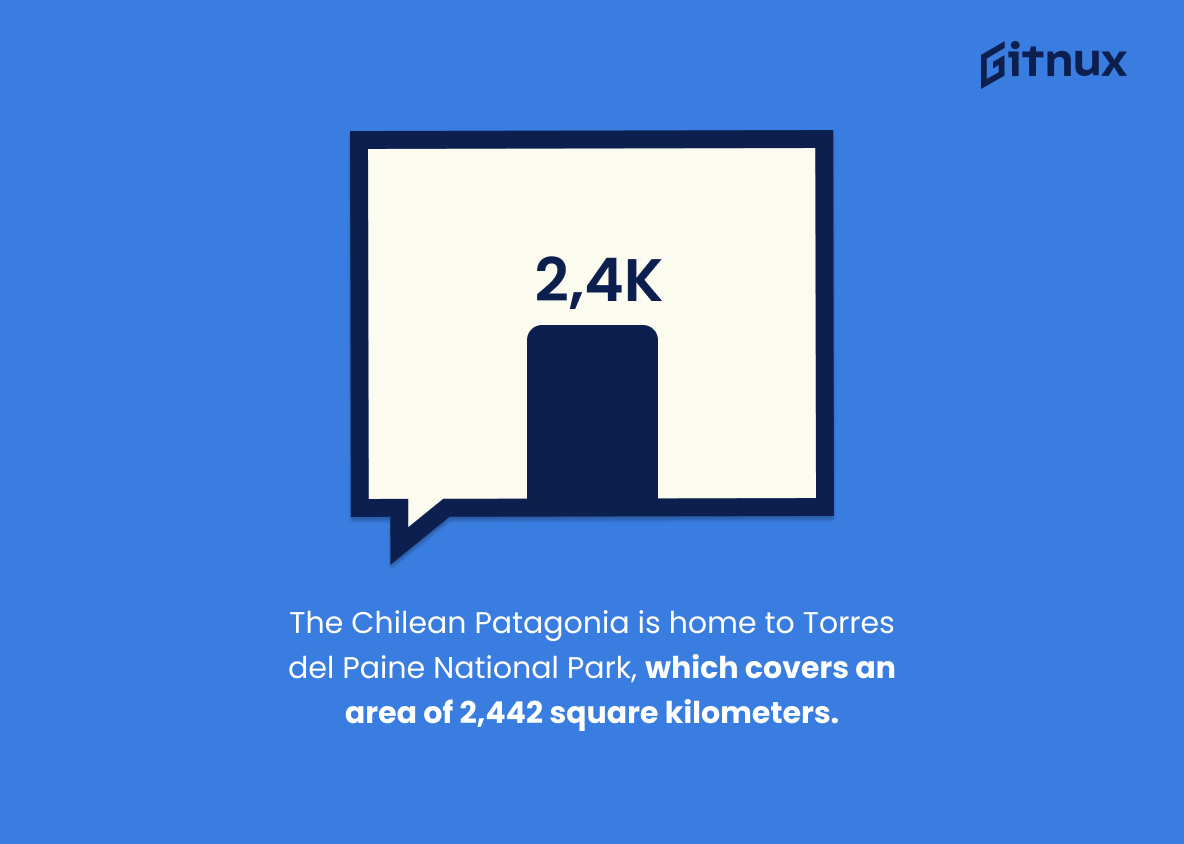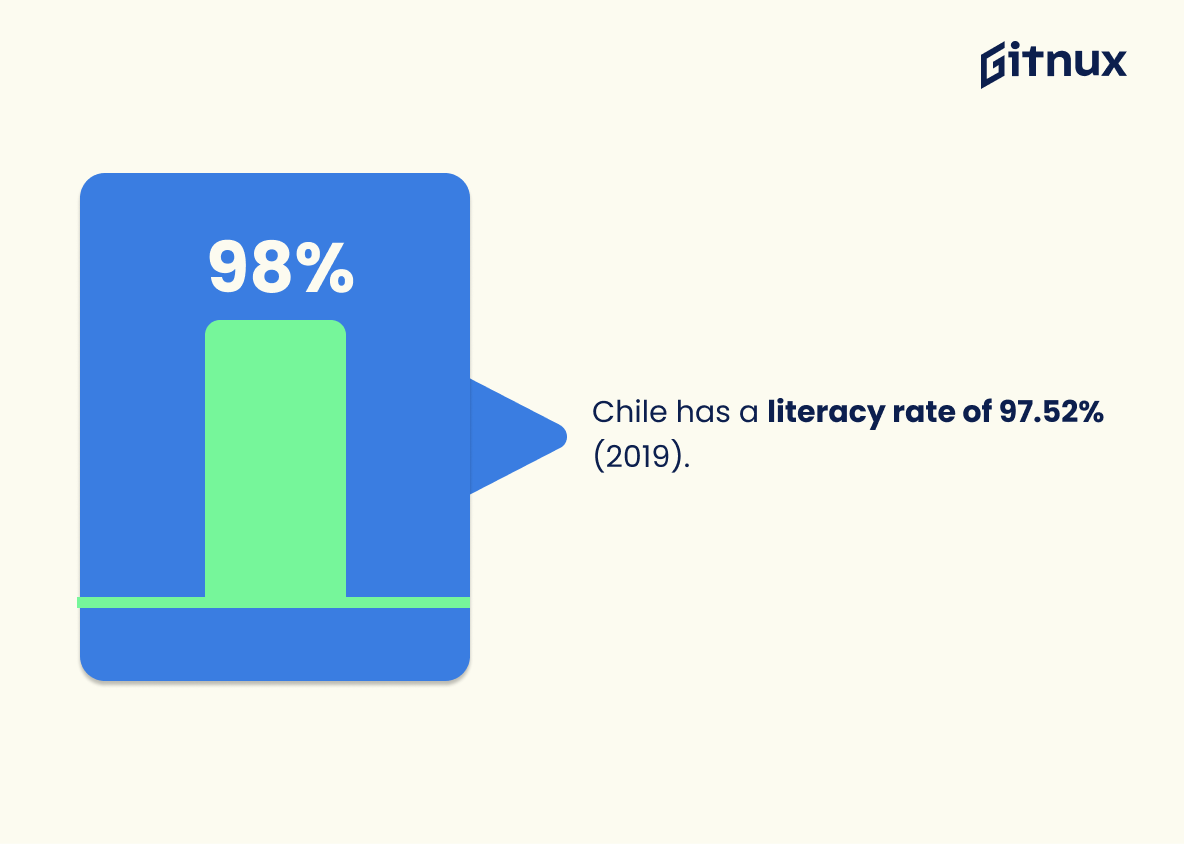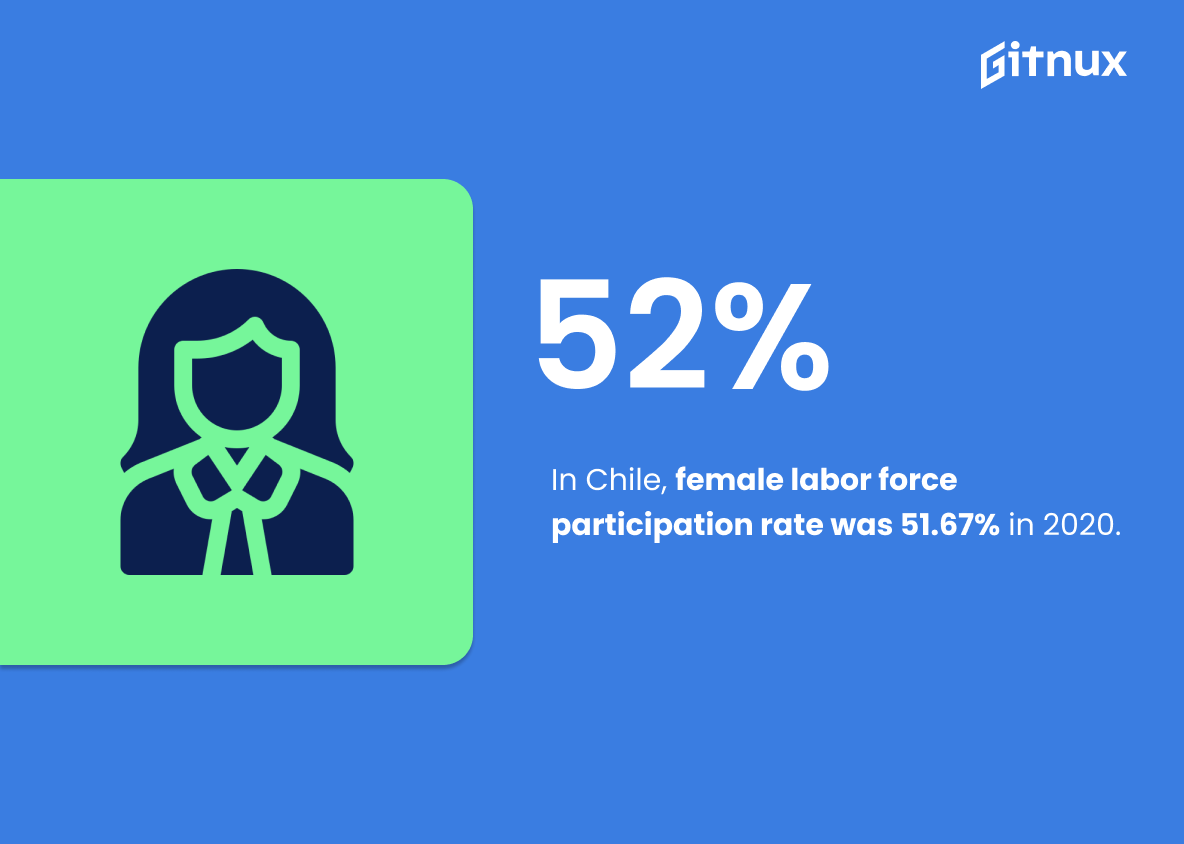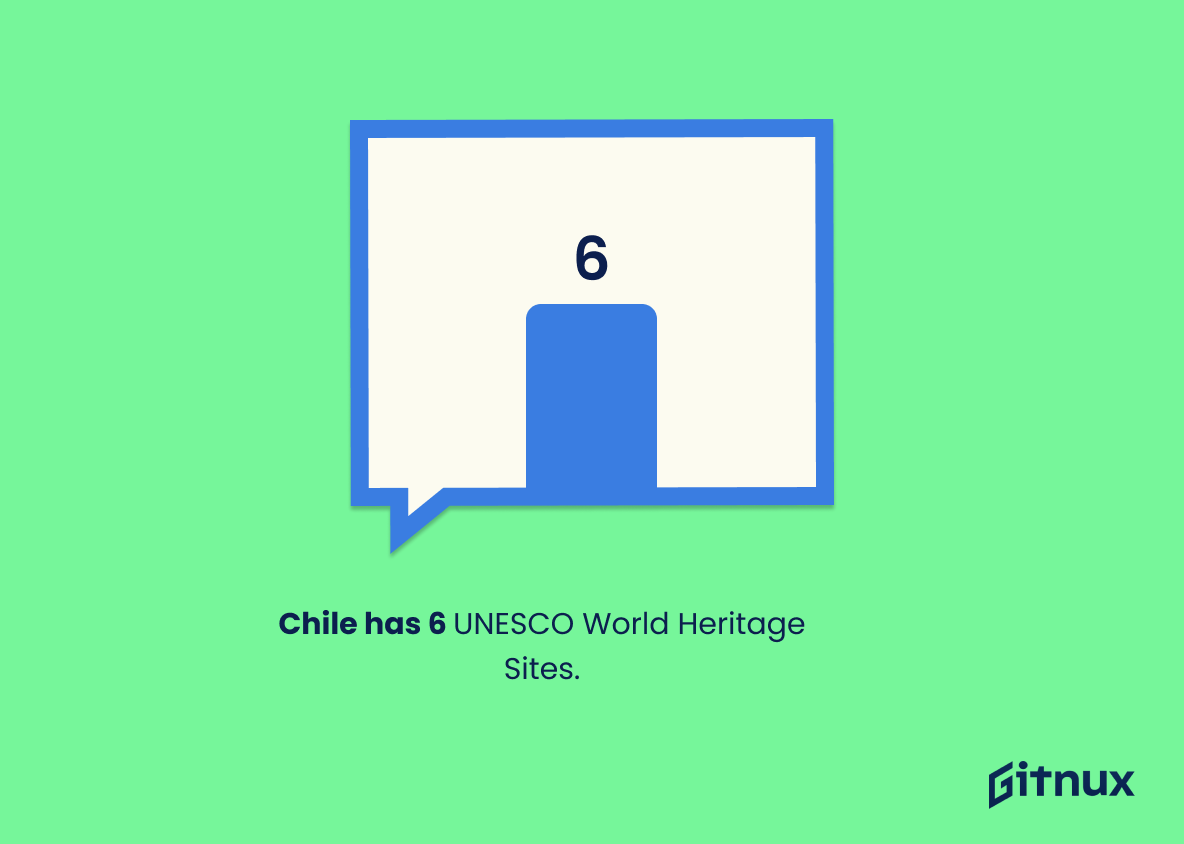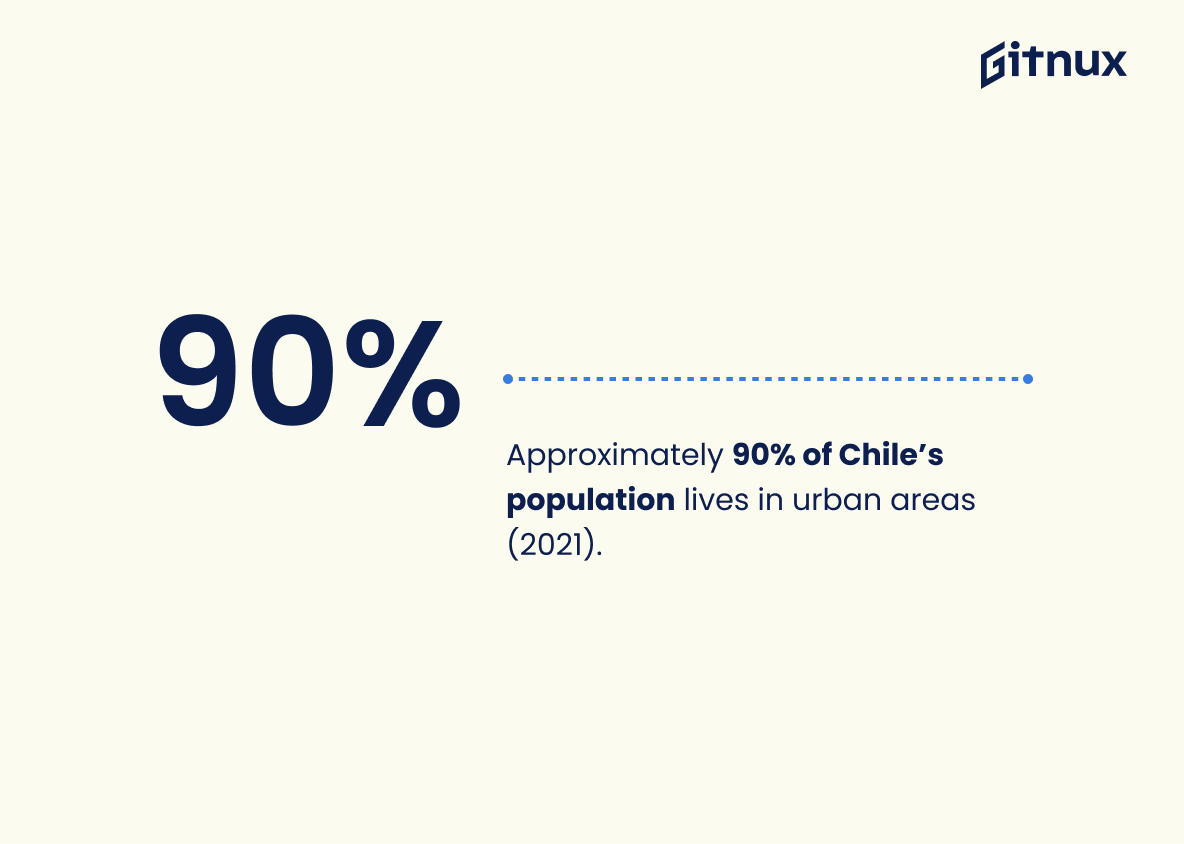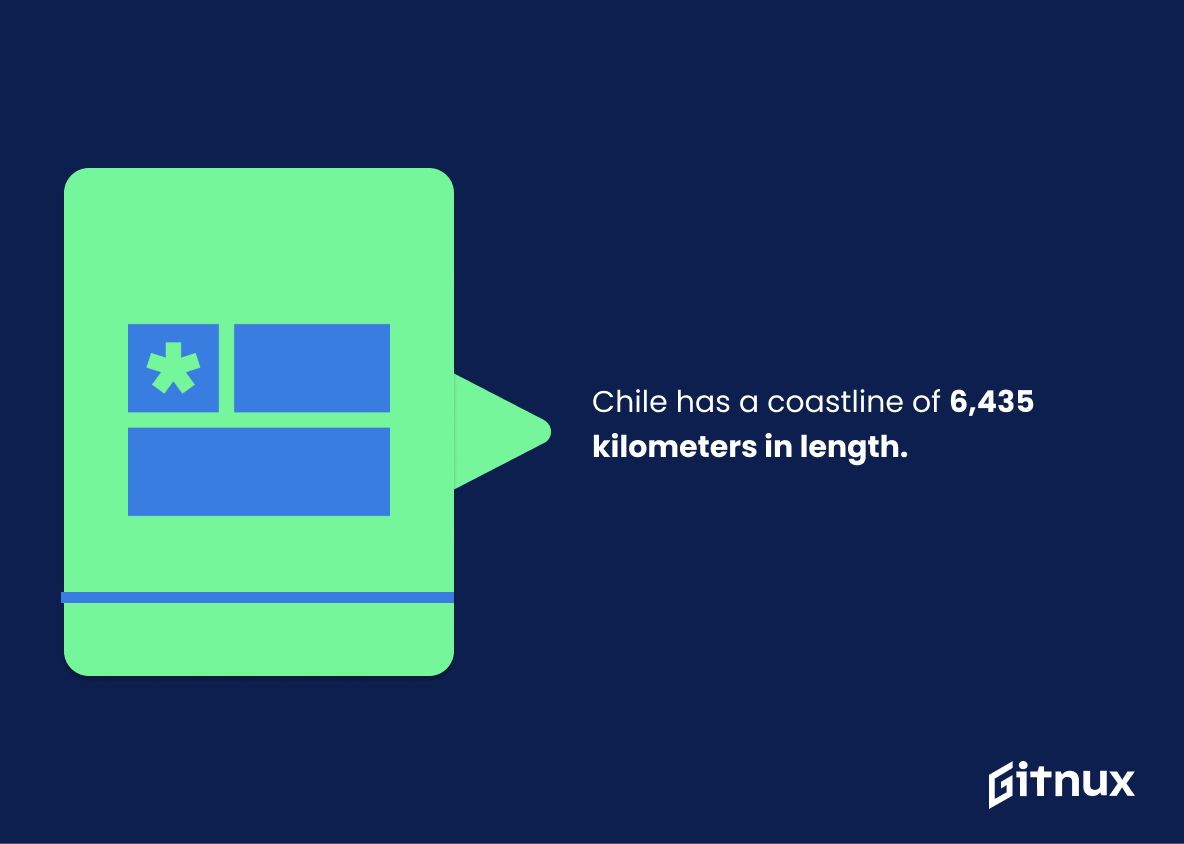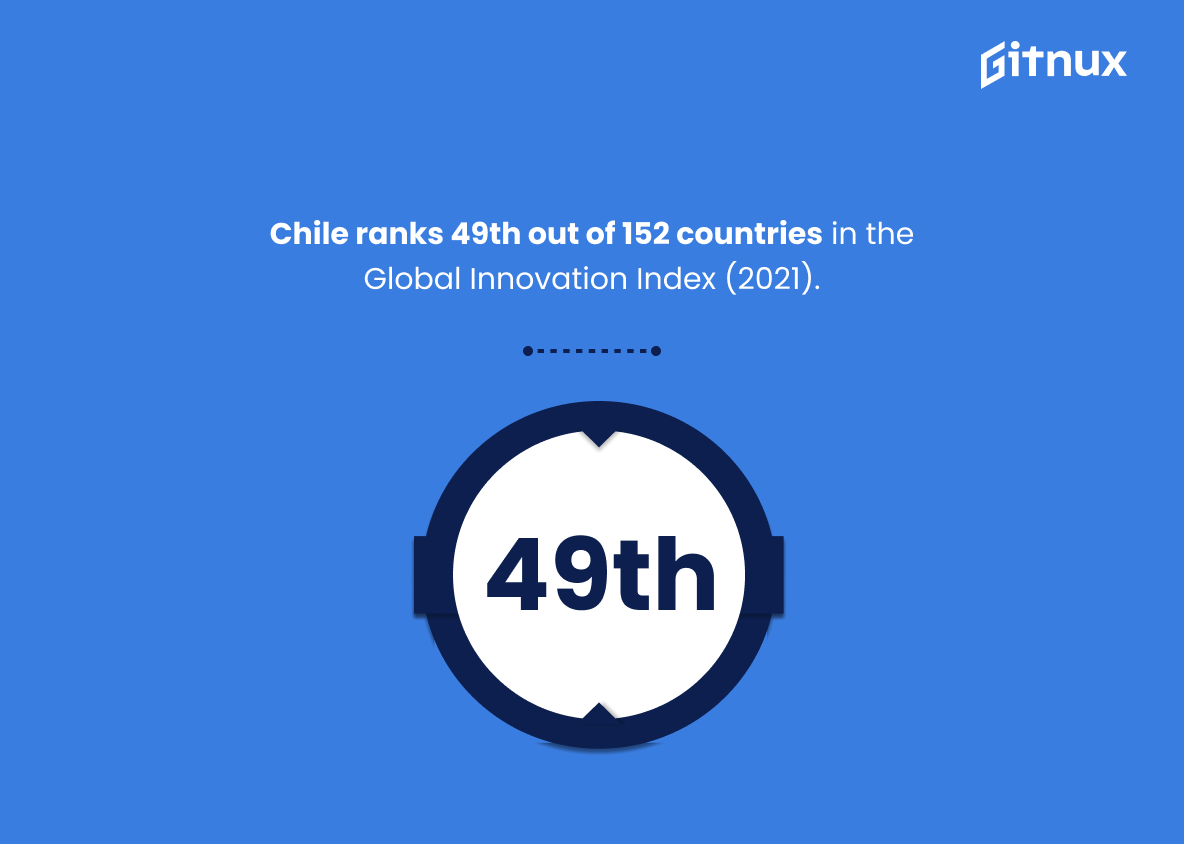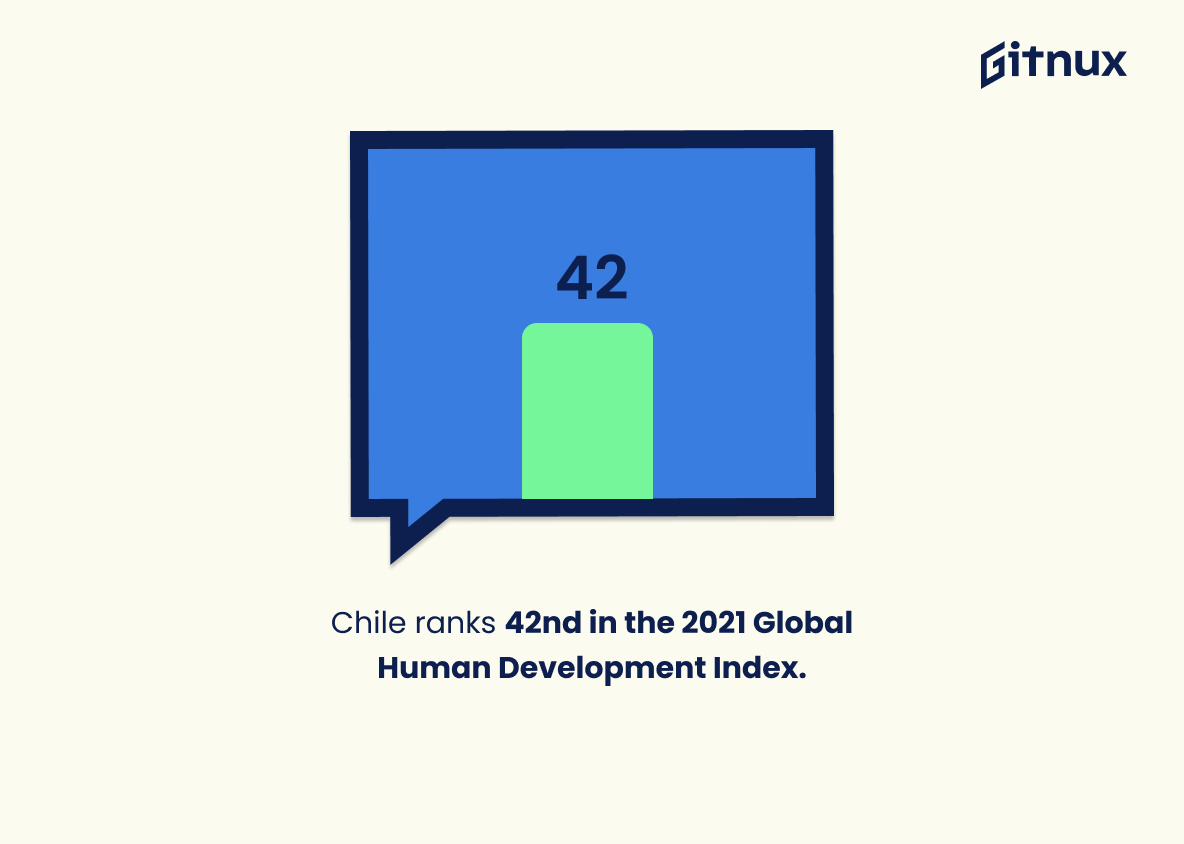Chile is a country located in South America, with an estimated population of 19.4 million people (2021). Its capital city Santiago has a population of around 6.7 million people (2021), and its GDP is estimated at $306 billion USD (2020). Chile’s geography includes the Chilean Patagonia which houses Torres del Paine National Park covering 2,442 square kilometers. In terms of press freedom, Chile ranks 10th in the World Press Freedom Index (2021) while it holds 28th place out of 180 countries on the 2020 Corruption Perceptions Index. The literacy rate stands at 97.52% (2019) and female labor force participation rate was 51.67% in 2020 according to data from World Bank Indicators Database for Development Statistics 2021-22 edition .
The country also boasts 6 UNESCO World Heritage Sites as well as 90% urbanization level among its citizens( 2021 ). It has a coastline stretching over 6435 km long and Ojos del Salado standing tall at 22608 feet or 6891 meters above sea level marks highest point within Chilean borders . Life expectancy here reaches 80 years 18 months , making it one amongst top nations worldwide when it comes to quality life span . Additionally , Chile leads Central American region by having 44 % renewable energy share along with being world’s largest copper producer producing 5600 metric tons annually since 2019 . Lastly , HIV/AIDS prevalence remains low 0 4 percent due to effective preventive measures taken up by government authorities during past few decades resulting into total number internet hosts reaching 657558 units till date this year
The fact that Chile has a population of 19.4 million people is an important statistic to consider when discussing Chile’s overall statistics. This figure provides insight into the size of the country’s population, which can be used to analyze the country’s economic and social trends. Additionally, this statistic can be used to compare Chile’s population to other countries, providing a better understanding of the country’s place in the world.
Santiago, the capital of Chile, has a population of around 6.7 million people (2021).
This statistic is a key indicator of the size and scope of Chile’s population, providing insight into the country’s economic and social development. It is also a useful reference point for understanding the country’s overall population dynamics, including the distribution of people across different regions and cities. As such, it is an important statistic to consider when discussing Chile’s overall population and its implications for the country’s future.
Chile Statistics Overview
Chile’s GDP is estimated at $306 billion USD (2020).
The GDP of Chile is a telling statistic that speaks volumes about the country’s economic standing. It is a measure of the total value of goods and services produced in the country, and it provides a snapshot of the overall health of the economy. This statistic is especially important in the context of a blog post about Chile Statistics, as it gives readers an indication of the country’s economic strength and potential.
The Chilean Patagonia is home to Torres del Paine National Park, which covers an area of 2,442 square kilometers.
The sheer size of Torres del Paine National Park is a testament to the beauty and grandeur of Chile’s Patagonia region. Spanning an impressive 2,442 square kilometers, the park is a must-see destination for anyone looking to explore the country’s natural wonders.
Chile ranks 10th in the World Press Freedom Index (2021).
This statistic is indicative of the level of freedom of expression that citizens of Chile enjoy. It speaks to the level of trust that the government has in its citizens to express their opinions and beliefs without fear of retribution. This is an important factor in understanding the overall state of the country and its citizens, and is a key indicator of the level of democracy and freedom that exists in Chile.
Chile has a literacy rate of 97.52% (2019).
The literacy rate of 97.52% in Chile is a testament to the country’s commitment to education and knowledge. It is a sign of progress and a reflection of the country’s dedication to providing its citizens with the tools they need to succeed. This statistic is a powerful indicator of the potential of the Chilean people and the country’s potential for growth.
Chile ranks 28th out of 180 countries in the 2020 Corruption Perceptions Index.
This statistic is a testament to Chile’s commitment to transparency and accountability. It shows that the country is making strides in its fight against corruption, which is essential for a healthy and prosperous society. By ranking 28th out of 180 countries, Chile is demonstrating that it is taking the necessary steps to ensure that its citizens have access to a fair and equitable system.
In Chile, female labor force participation rate was 51.67% in 2020.
The statistic of female labor force participation rate in Chile is indicative of the progress the country has made in terms of gender equality. It shows that women are increasingly being given the opportunity to participate in the workforce and contribute to the country’s economic growth. This is an important step forward for Chile and a sign of progress in the right direction.
Chile has 6 UNESCO World Heritage Sites.
This statistic is a testament to Chile’s rich cultural heritage and its commitment to preserving its history and traditions. It speaks to the country’s dedication to preserving its unique identity and its place in the world. It is a reminder of the importance of preserving our collective history and culture, and of the value of the places and stories that make up our shared past.
Approximately 90% of Chile’s population lives in urban areas (2021).
This statistic is a telling indication of the urbanization of Chile, highlighting the fact that the majority of the population is concentrated in cities. This has implications for the country’s infrastructure, economy, and social dynamics, all of which are important topics to consider when discussing Chile’s statistics.
Chile has a coastline of 6,435 kilometers in length.
The impressive length of Chile’s coastline is a testament to the country’s vastness and beauty. It is a reminder of the many opportunities for exploration and adventure that await those who visit this stunning South American nation. From the rugged cliffs of the Atacama Desert to the lush forests of Patagonia, Chile’s coastline offers something for everyone. Whether you’re looking for a relaxing beach vacation or an adrenaline-filled adventure, Chile’s 6,435 kilometers of coastline provide plenty of options.
Chile ranks 49th out of 152 countries in the Global Innovation Index (2021).
This statistic is a testament to Chile’s innovative spirit, showcasing the country’s commitment to fostering creativity and technological advancement. It is a reflection of the nation’s dedication to progress and development, and serves as a reminder of the potential that lies within Chile’s borders.
Chile is the world’s largest producer of copper, producing about 5.6 million metric tons in 2020.
The fact that Chile is the world’s largest producer of copper is a testament to the country’s economic prowess. Copper is a vital resource for many industries, and its production is a major source of income for Chile. This statistic highlights the importance of copper to Chile’s economy and the potential for further growth in the future.
Chile ranks 42nd in the 2021 Global Human Development Index.
The 2021 Global Human Development Index ranking of 42nd for Chile is a telling statistic that speaks volumes about the country’s overall quality of life. It is a reflection of the nation’s progress in areas such as health, education, and economic opportunity, and serves as a benchmark for how far Chile has come and how far it still has to go. This statistic is an important indicator of the nation’s overall well-being and should be taken into consideration when discussing Chile’s statistics.
Chile has the lowest prevalence rate of HIV/AIDS in South America, at 0.4% (2019).
This statistic is a testament to Chile’s success in tackling the HIV/AIDS epidemic in South America. It is a shining example of the country’s commitment to public health and its ability to effectively manage the spread of the virus. This statistic is a reminder of the importance of investing in preventative measures and providing access to quality healthcare for all.
Chile has 657,358 internet hosts (2021).
The statistic of Chile having 657,358 internet hosts is indicative of the country’s commitment to digital connectivity and technological advancement. It speaks to the nation’s investment in the infrastructure necessary to support a modern, digital economy, and its ability to provide its citizens with access to the internet. This is an important factor in the development of a thriving economy and a strong society, and it is a key indicator of Chile’s progress in the 21st century.
Chile has the second-highest renewable energy share in South America, at 44% (2019).
This statistic is a testament to Chile’s commitment to sustainability and environmental protection. It demonstrates that the country is taking proactive steps to reduce its reliance on non-renewable energy sources and is investing in renewable energy sources to meet its energy needs. This is an important step in the fight against climate change and is a positive sign for the future of Chile and the region.
Chile has the driest place on Earth, the Atacama Desert.
This statistic is a testament to Chile’s unique geography, highlighting the country’s remarkable diversity. It speaks to the fact that Chile is home to some of the most extreme climates and landscapes on the planet, making it an ideal destination for travelers looking for a truly unforgettable experience.
The highest point in Chile is Ojos del Salado standing at 22,608 feet (6,891 meters).
This statistic is a testament to the grandeur of Chile, showcasing the country’s impressive natural beauty. Ojos del Salado is a stunning peak that stands as a symbol of the country’s awe-inspiring landscape, and its elevation of 22,608 feet (6,891 meters) is a reminder of the grandeur of Chile.
Chile’s life expectancy is 80.18 years (2021).
The life expectancy of Chile’s population is a telling statistic that speaks volumes about the overall quality of life in the country. It is a reflection of the nation’s access to healthcare, education, and other resources that contribute to a healthy and prosperous society. This statistic is a testament to the progress Chile has made in providing its citizens with a better quality of life.
Conclusion
Chile is a country with an impressive population of 19.4 million people, the majority of whom live in urban areas and are literate at 97.52%. The capital city Santiago has 6.7 million inhabitants and Chile’s GDP stands at $306 billion USD (2020). It also boasts some remarkable natural attractions such as Torres del Paine National Park, which covers 2,442 square kilometers, and the Atacama Desert – the driest place on Earth. In terms of international rankings for press freedom (10th), corruption perceptions index (28th) and global innovation index (49th), Chile performs well above average compared to other countries around the world. Additionally, it ranks 42nd in Global Human Development Index while its female labor force participation rate was 51.67% in 2020; HIV/AIDS prevalence rate is 0.4%; internet hosts number 657358; renewable energy share 44%, life expectancy 80 years old; copper production 5600000 metric tons per year; coastline 6435 km long ; highest point Ojos del Salado standing 22608 feet high . All these facts make clear that Chile is a vibrant nation with many opportunities for growth both economically and socially
References
0. – https://www.renewableenergymagazine.com
1. – https://www.hdr.undp.org
2. – https://www.worldbank.org
3. – https://www.chile.travel
4. – https://www.worldpopulationreview.com
5. – https://www.rsf.org
6. – https://www.data.worldbank.org
7. – https://www.statista.com
8. – https://www.cia.gov
9. – https://www.worldometers.info
10. – https://www.whc.unesco.org
11. – https://www.internetlivestats.com
12. – https://www.geonames.org
13. – https://www.globalinnovationindex.org
14. – https://www.transparency.org

